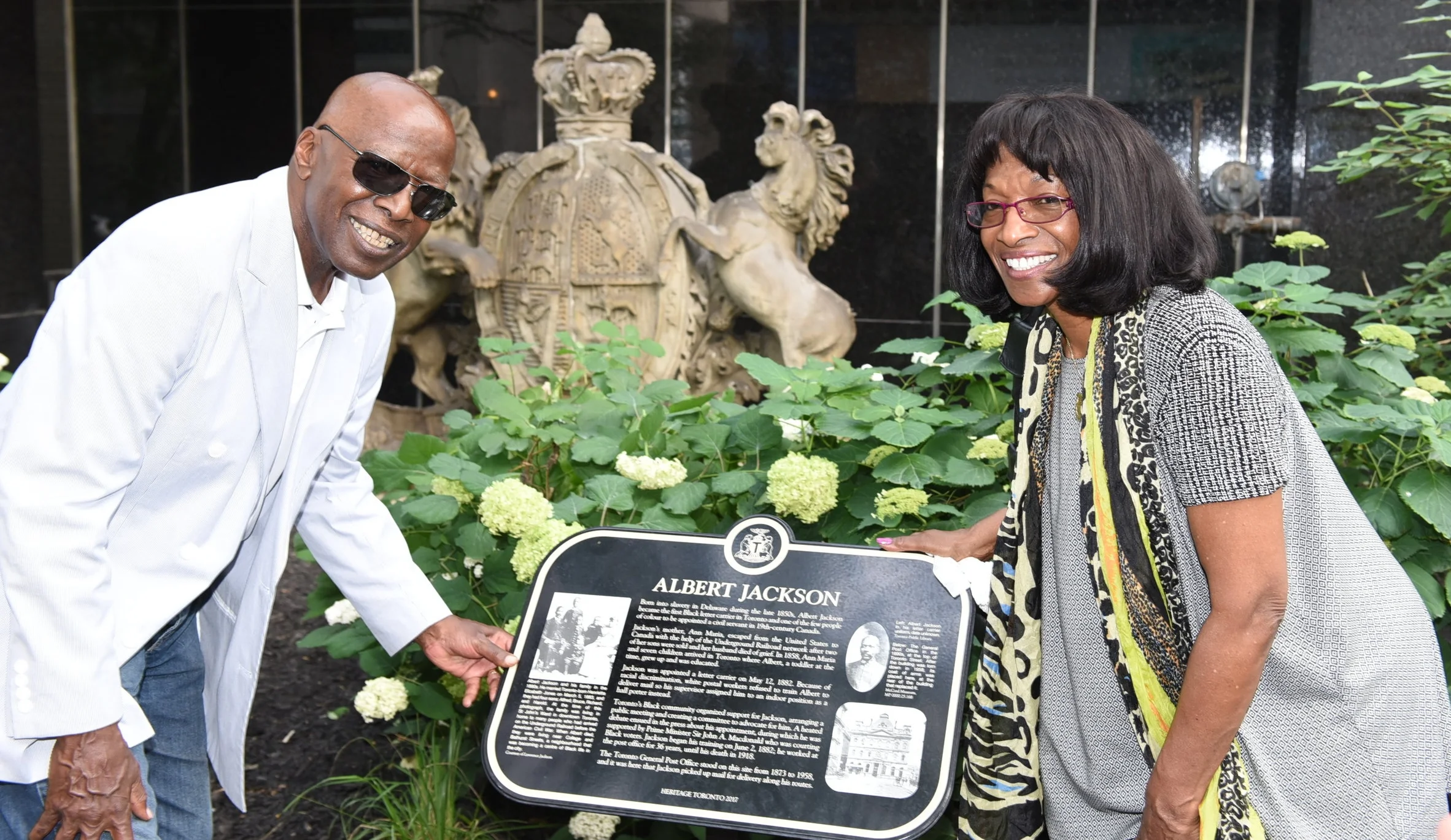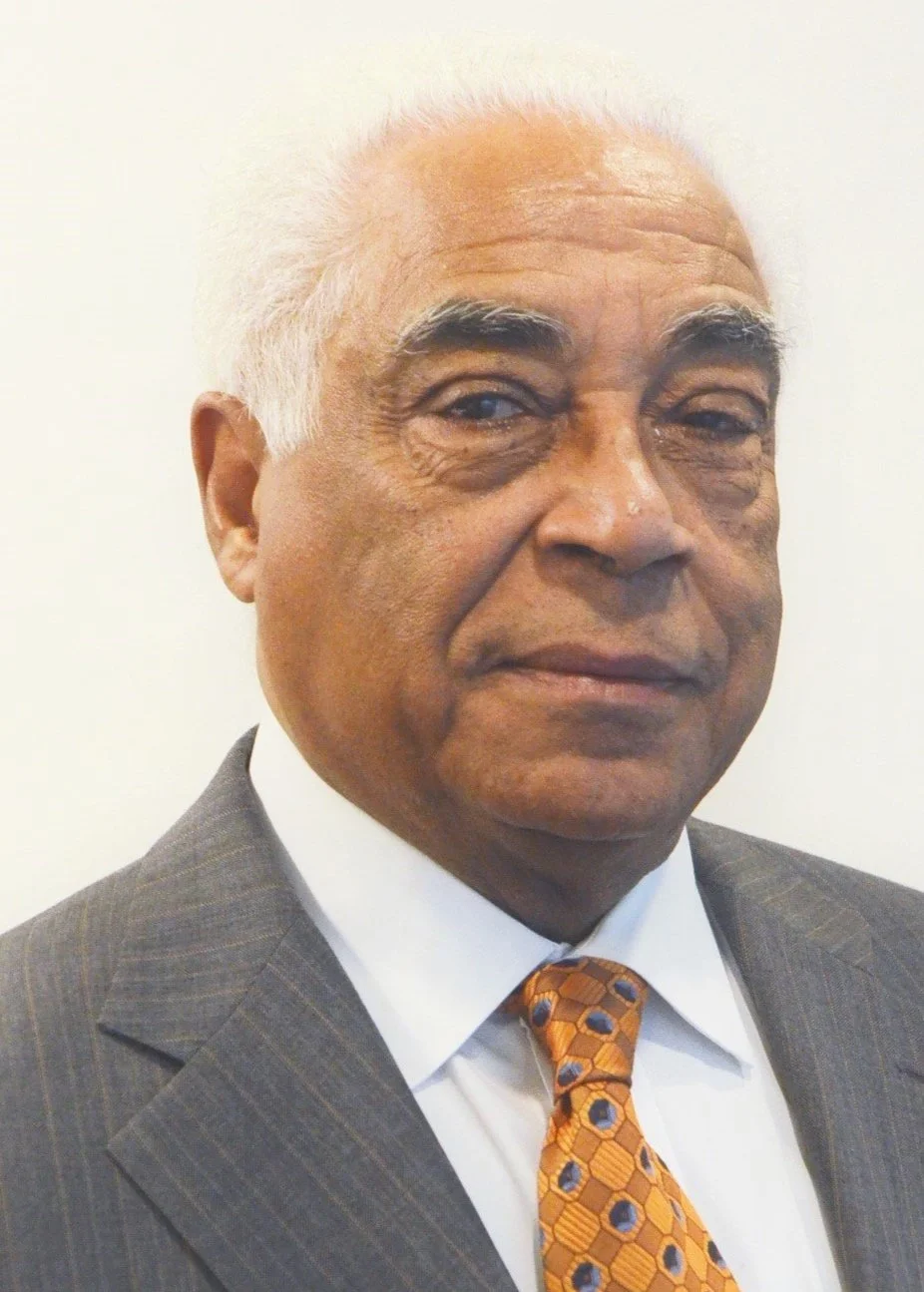Plaque honours memory of Canada's first Black postman Albert Jackson
August 4, 2017
A laneway bears his name in Harbord Village where a play telling his story was performed on residents’ porches two years ago.
There’s a commemorative poster honouring his legacy and a book written and illustrated by Clinton Street Public School Grade One students that was launched three months ago as part of the Mayworks Festival of Working People and the Arts.
Now, a historical plaque for Albert Jackson -- Canada’s first Black postman – has been unveiled by Heritage Toronto at 26 Lombard St., the site of the Toronto General Post Office where Jackson picked up mail for delivery for 36 years starting in 1882.
Dream Office REIT owns the building where the old post office was located from 1873 to 1958.
“We truly believe in investing in our communities and supporting initiatives that enrich the lives of residents,” said Daniel Marinovic, the firm’s senior vice-president with responsibility for land & housing, at the unveiling ceremony two weeks ago. “This aligns perfectly with our values and we are honoured to have this plaque installed on one of our properties. This seems particularly fitting this year as we celebrate the country’s 150th anniversary and recognize the people and events that shape our country. Albert Jackson and his family came looking for freedom and opportunity just like thousands continue to do today from every corner of the world.”
When Jackson’s mother – Ann Maria Jackson who was an enslaved woman in Delaware – learned that her master intended to sell four more of her children (her eldest two had already being sold), she hurriedly gathered her remaining seven kids and embarked on the challenging journey to Canada. They arrived here in 1859 and the two children who were sold somehow found their way to Toronto where the family was united.
They stayed briefly with Thornton and Lucie Blackburn, fugitive slaves from Kentucky who established the first cab company in Upper Canada and the first form of public transportation in the province, owned six homes in the city they rented to other fugitives fleeing slavery in the United States and co-founded Trinity Church on King St.
In 1985, award-winning author, historian and archaeologist Dr. Karolyn Smardz Frost excavated the Blackburn’s home. During the dig, she learnt that Jackson’s mother and a brother – Richard – were buried in the Blackburn’s family grave at Necropolis cemetery.
“That sent me on a journey trying to find out who the Jackson’s were,” said Smardz Frost who authored ‘I’ve Got a Home in Glory Land: A Lost Tale of The Underground Railroad’. “…We bring forward, with the story of Albert Jackson and other stories, the accomplishments of people who came to Canada in search of freedom. While they didn’t find a non-racial society as there was plenty of discrimination, they rose above it, created lives for themselves and showed the world what they were capable of. They did remarkable things in this city. Around us, we have many members of the Jackson family who have all contributed to help build Canada the way it is today.”
It was while reading Smardz Frost’s award-winning book that Toronto publisher Patrick Crean learnt about Jackson. A few years earlier, he also found out learnt that the house he and his wife Susan Swan reside in at 213 Brunswick was owned by Jackson who bought the home in 1914, four years before he died.
Family members lived in it up until 1970.
“I think about Albert and feel very privileged,” said Crean who published Smardz Frost’s book and joined her at the unveiling ceremony. “This plaque is timely and very significant.”
When Crean got wind a few years ago that the Harbord Village Residents’ Association (HVRA) was seeking to attach names with a historical reference to 23 unnamed laneways in the Annex neighbourhood, he successfully nominated Jackson’s name.
The youngest of the siblings, Jackson’s colleagues refused to train him when he joined the postal service and he was given a menial inside job as a hall porter.
A federal election was looming at around the same time and the postmaster, who was a close political ally of then Prime Minister Sir John A. MacDonald, promised to train the recruit in order to secure the nearly 60 Black votes in the Toronto Centre riding held by the Conservatives. The postmaster had earlier accused Liberal candidate J.D. Edgar of exploiting the situation to secure votes.
The ploy worked in favour of Jackson who spent the next 36 years as a mailman until his retirement.
Family and friends raised $6,500 for the plaque.
“Each Toronto plaque is a community building venture which allows us to recognize the past while acknowledging our present and certainly our future,” said Heritage Toronto Board member Abena Buahene. “Albert Jackson’s story is one that remains relevant to our present and can show us a way forward to build a more resilient and kind city. It is a reminder of how far we have come and the work we have left to do.”
Ontario Black History Society (OBHS) president Nikki Clarke said Jackson is most deserving of the recognition.
“Our mandate is to preserve and promote Black history and we are so delighted to honour Albert Jackson as he was a remarkable man whose contributions left a legacy as demonstrated through his determination and spirit of excellence,” she said. “His story is not only a part of Black history but also Canada’s history.”
Actress and singer Shawne Jackson-Troiano and her brother Jay – they were members of the popular Majestics group that recorded several albums for the ARC Records label in the late 1960s – are Jackson’s great grandchildren.
Speaking on behalf of the family, she paid tribute to multi-talented actor/director David Ferry who set up the meeting with Heritage Toronto.
“He was the driving force in getting us here tonight,” Jackson-Troiano said. “He was the one that pushed me to keep things moving.”






